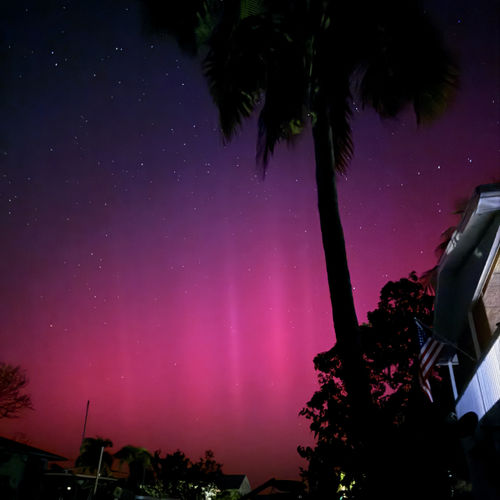
| Added | Sun, 18/02/2018 |
| Источники | |
| Дата публикации | Sun, 18/02/2018
|
| Версии |
The Northern and southern lights have fascinated people for thousands of years. The ancient people could only speculate about their origin, often tying colorful lights flying away with the souls of the dead or other heavenly spirits. Only recently have scientists learned about the principles of occurrence of the Aurora, but could not directly observe the key part of this process until the last moment.
In the new study, an international team of specialists have described the first direct observation of the mechanism behind pulsating auroras. And although they had not found spirits dancing in the sky, their report on choral waves and "frolicking" electrons still delicious.
Polar lights originate on the Sun. Charged particles from our star are ejected and a steady stream called the solar wind, and the huge eruptions, known as coronal mass ejections. Part of this solar material reaches the Ground in a couple of days, and charged particles and magnetic fields cause the emission of other particles already captured in the magnetosphere of the Earth. These particles fall as rain in the upper atmosphere and react with some gases, causing them to produce light.
Different colors of the Aurora depend on the gas and how high they are in the atmosphere. Oxygen glows greenish-yellow at a height of approximately 96.5 km, and red at higher altitude. Nitrogen emit blue or reddish-purple light.
Aurora are varied — from pale rays of light to bright wavy ribbons. A new study focuses on the pulsating lights, flashing spots of light, which appear roughly at an altitude of 100 km above the earth's surface at high latitudes in both hemispheres. "These storms produce illumination in the period from twilight to midnight — the study authors write. — Followed by violent movements agrarnih arcs that suddenly breaks up and the subsequent appearance of scattered spots pulsing at dawn".
The process is controlled by the "global change in the structure of the magnetosphere", the scientists explain. Electrons in the magnetosphere are usually jumping along the geomagnetic field, but a special kind of plasma waves and choral waves causes them to spill out the rain in the upper atmosphere. These falling electrons then break out light flashes, which we call auroras, although some researchers wondered whether a powerful choral waves to achieve this reaction from the electrons.
New observations suggest that Yes. So says Satoshi Kasahara, a planetary scientist from the University of Tokyo and lead author of the study. "The first time we directly observed the scattering of electrons choral waves that produce precipitation of particles in the Earth's atmosphere, says Kasahara. — A drop-down electron flow was intense enough to generate pulsating Aurora".
To see this, Kasahara and his colleagues have created their own sensor of electrons, designed to identify the exact interaction of the electrons of the Aurora, managed choral waves. This sensor is located on the spacecraft Arase, which was launched by the Japanese aerospace exploration Agency in 2016.
The researchers also published an animation to illustrate the process.
The process described in the study is probably not limited to our planet, researchers added. It can also be applied to polar auroras on Jupiter and Saturn, where it was also identified choral waves, as well as other magnetized objects.
There are practical reasons for scientists to explore the Aurora, for example, the geomagnetic storms that give rise to them, can be a hindrance to communications, navigation and other electrical systems on Earth.
Translated by «Yandex.Translator»
© Smelov | Shutterstock
Translated by «Yandex.Translator»
Новости со схожими версиями
Log in or register to post comments









